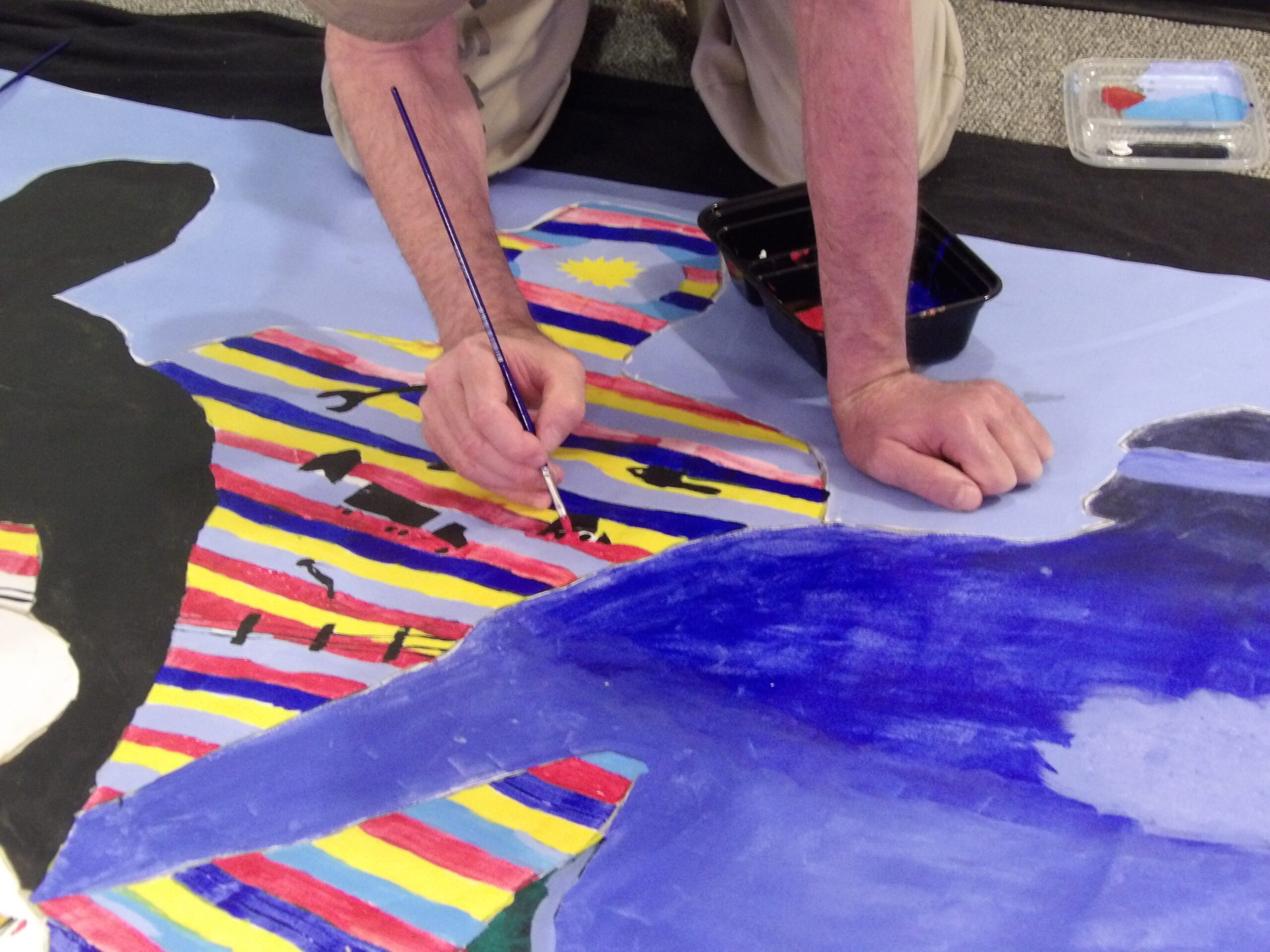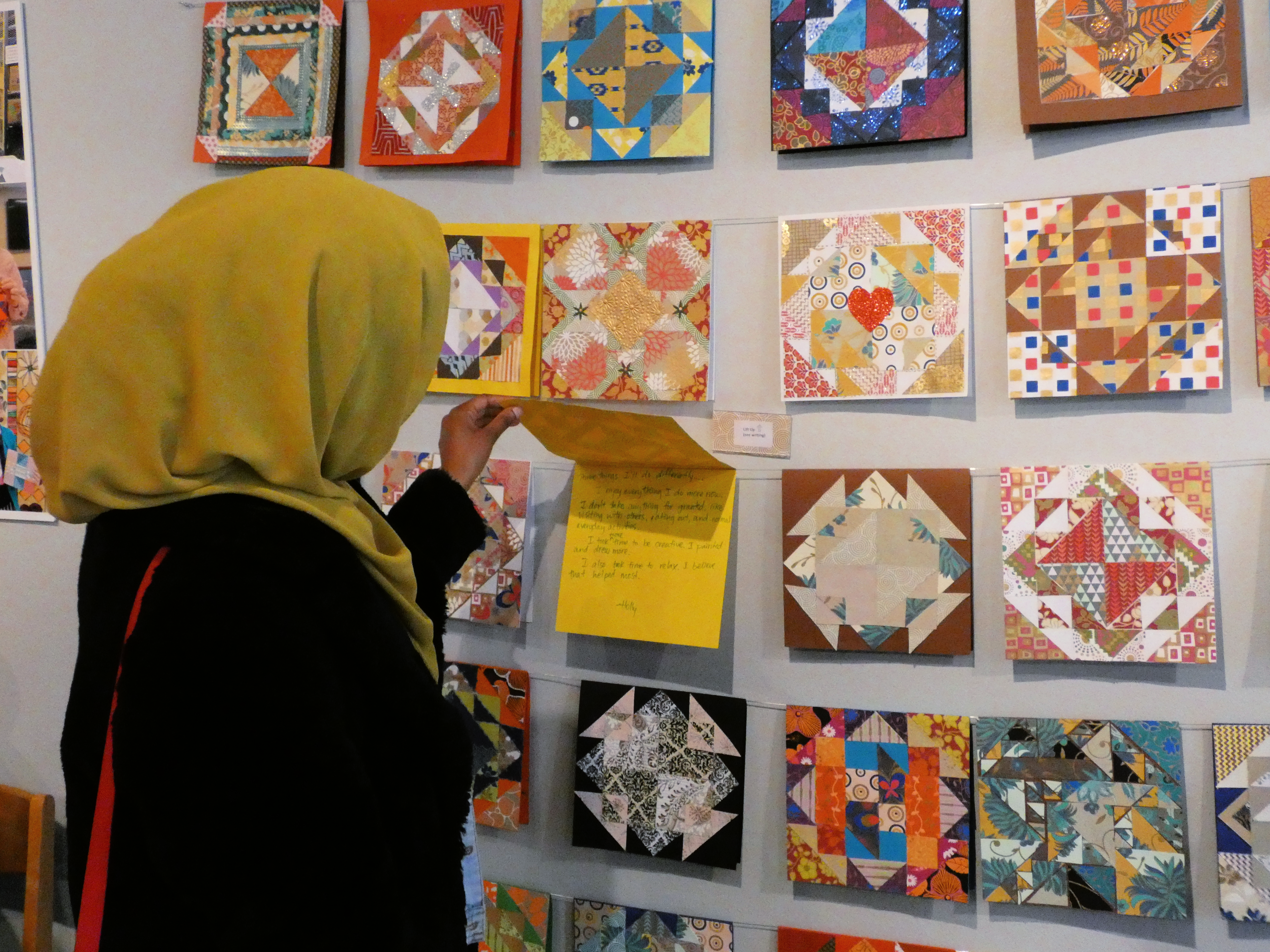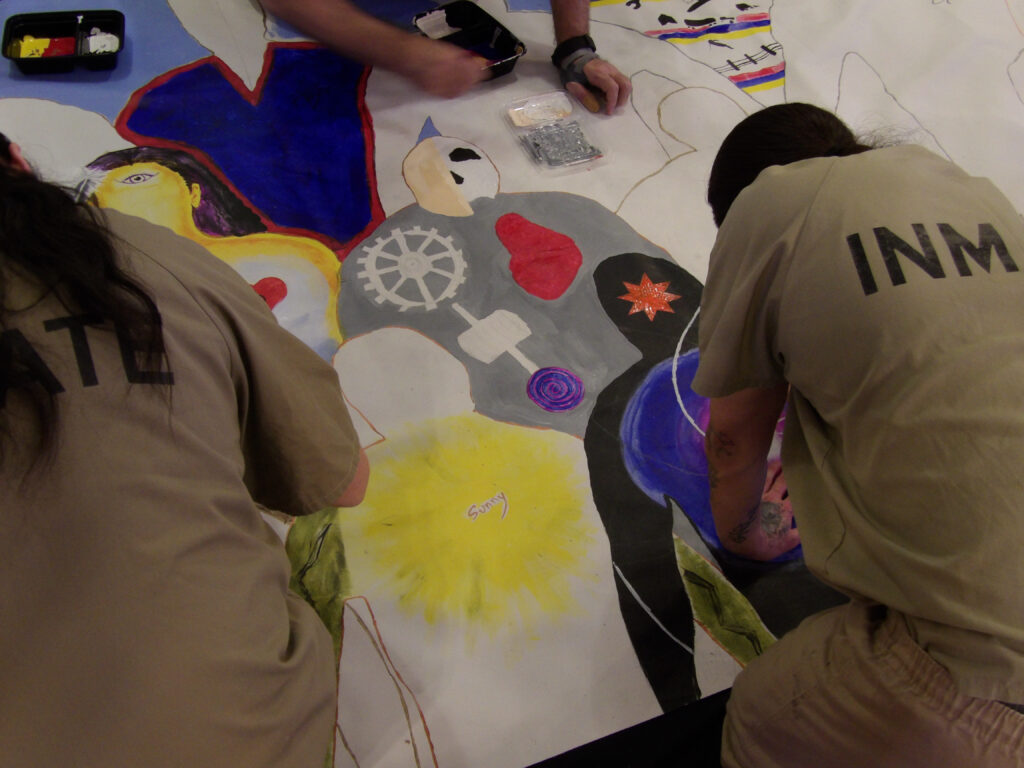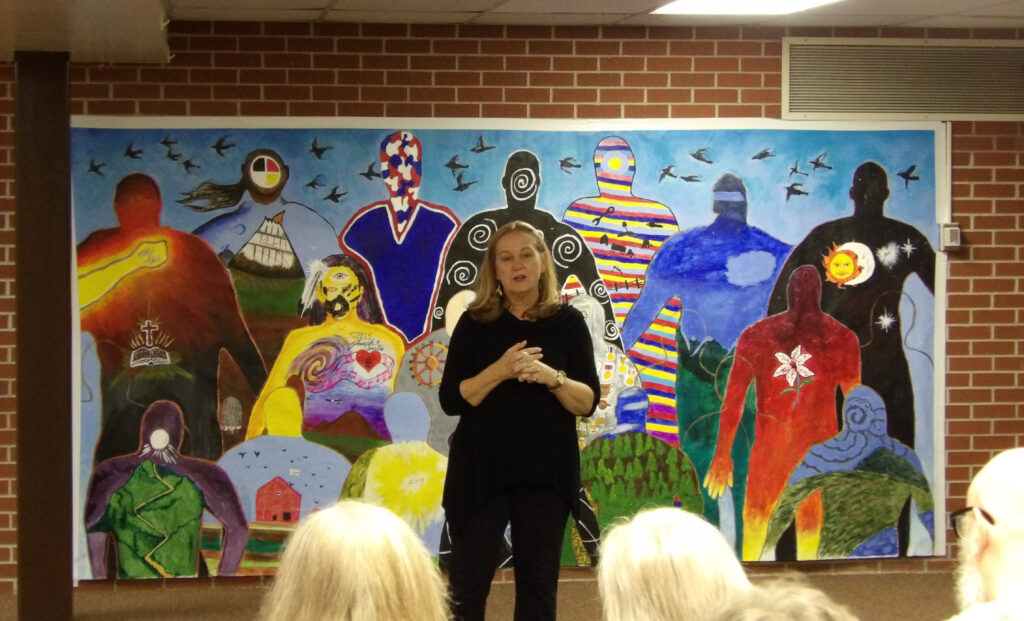
Ariadne (Ari) Albright had worn many hats as a fine artist, teaching artist, university instructor, and entrepreneur when she first began her residency at Sanford Cancer Center in Sioux Falls, South Dakota. She soon took on a new role: Artist in Healthcare, which has become central to her work within the state and beyond.
“I found working with patients and families to be such an intuitive and gentle experience,” she explains. “What drew me to the field is what happened when I got there: it felt welcoming and inspiring in a different way than a classroom.”
The field of Art Therapy is well-established as a part of clinical teams in many areas, but Albright became curious about where else fine artists were being employed to support wellness in healthcare settings. She soon discovered that the Arts in Health field offers something different but complementary.
“Arts in Health professionals are creatives. We’re culture bearers and fine artists. Our focus is on creativity, exploration of ideas, and trying new techniques,” Albright clarifies. “When we work with others, we are concentrated on the art-making aspect of a project. Our work supports wellness without going out of our lane and providing therapy.”
ARI ALBRIGHT“Arts in Health is a matter of reminding people about a quality of life that we all have the right to. Sometimes, our circumstances make us forget that we can stop and enjoy each other’s company.”

Bringing Creativity to Care
In the decade since her first health-based residency, Albright has helped make Vermillion, South Dakota, a lively hub for Arts in Health work in the Midwest and beyond. In her work through her business, Creative Care LLC, and the University of South Dakota, she has helped facilitate hundreds of projects day-to-day with individuals in settings ranging from dementia care to prisons. Each project takes an artistic approach and has its own unique impact.
“Arts in Health is a matter of reminding people about a quality of life that we all have the right to. Sometimes, our circumstances make us forget that we can stop and enjoy each other’s company,” she elaborates. “We can work with paper and paint. We can aspire to create something beautiful and then leave as friends.”

Albright launched the Sanford Arts Vermillion program at Sanford Vermillion Medical Center in 2013, which shows promise in reducing symptoms of dementia like wandering and aggression. Rather than relying on psychotropic medication to curb these behaviors, regular arts gatherings allow staff to redirect residents’ energy and focus.
Through ‘The Barn Quilt Project: South Dakota Strong,’ she and her team created nearly 1,000 art projects with South Dakotans, engaging in conversations about their experiences during the COVID-19 pandemic. Using the nine-block quilt format, this project — funded by the CDC Foundation — recognized local artists as trusted messengers for health information. Most recently, Albright launched a collaborative project to bring art to a space where wellness needs extra support: prisons.
Albright and Suzanne Costello, Minneapolis-based Artistic Director of Stuart Pimsler Dance & Theater, used funding from the National Endowment for the Arts to help launch the ‘I Believe: South Dakota Prison Project’ with the Department of Corrections, South Dakota Arts Council, and Prison Ministry with the Catholic Diocese of Sioux Falls. This three-week residency with those incarcerated at the South Dakota State Penitentiary in Sioux Falls focused on visual arts, movement, and writing immersive exercises, culminating in a performance and an art exhibition.
Twenty-three incarcerated individuals participated in a mural, each tracing their silhouette and filling it with whatever color, pattern, or imagery they wanted. “Much like their own experience in a limited or confined space, there are beliefs inside each of us that help keep everyone alive and thriving. I was interested in exploring what that interior space was like for them,” Albright shares.
The exhibition of artwork, photos, and artist statements is traveling throughout the state, sparking a quiet dialogue between those on the outside viewing and on the inside creating. In April, the second iteration of the project, ‘I Believe II,’ will be facilitated at Mike Durfee State Prison in Springfield, South Dakota.




Exploring the Possibilities
Arts in Health can serve many functions: an invitation to connect, a welcome distraction, a moment of reflection, or a simple moment to pause. How can artists bring this practice into the community? How can this discipline be used to imagine creative solutions in other fields? The University of South Dakota is answering that question with an undergraduate and graduate certificate in Arts in Health, spearheaded by Albright and the College of Fine Arts. Students from disciplines ranging from health sciences to social work to political science have the opportunity to bring Arts in Health practices to their own work and communities.
The Arts in Health field is making exciting new connections between communities and creativity every day. The arts are used to convey public health messages in West Africa. In the United Kingdom, doctors have successfully piloted the practice of social prescribing, where individuals get access to arts programming as part of their treatment.
Opportunities for meaningful experiences, facilitated at the deft hand of an artist in health professional, are abundant. Wherever the field heads next, Albright’s work ensures South Dakota artists will continue to be part of the conversation.
